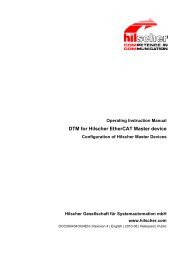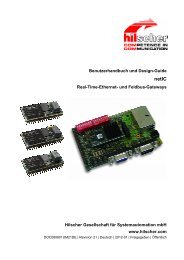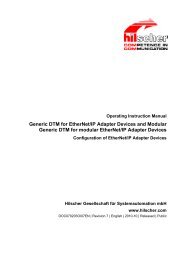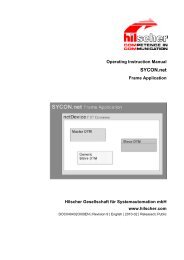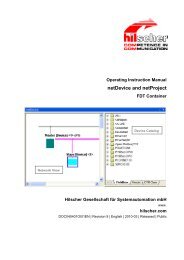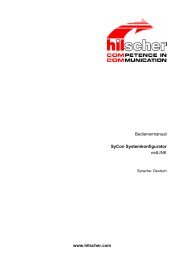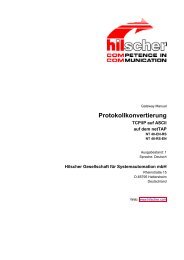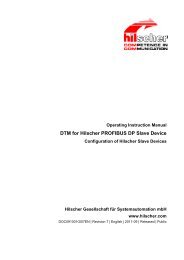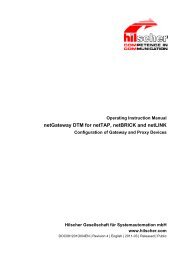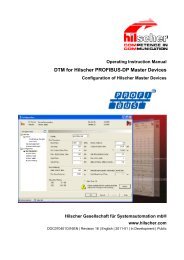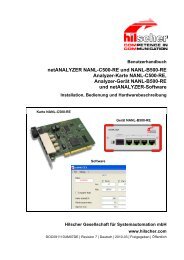CANopen Slave
CANopen Slave
CANopen Slave
Create successful ePaper yourself
Turn your PDF publications into a flip-book with our unique Google optimized e-Paper software.
Dual-Port-Memory 24/112<br />
3 Dual-Port-Memory<br />
All data in the dual-port memory is structured in blocks. According to their functions, these blocks use<br />
different data transfer mechanisms. For example, data transfer through mailboxes uses a<br />
synchronized handshake mechanism between host system and netX firmware. The same is true for IO<br />
data images, when a buffered handshake mode is configured. Other blocks, like the status block, are<br />
read by the host application and use no synchronization mechanism.<br />
Types of blocks in the dual-port memory are outlined below:<br />
• Mailbox<br />
transfer non-cyclic messages or packages with a header for routing information<br />
• Data Area<br />
holds the process image for cyclic IO data or user defined data structures<br />
• Control Block<br />
is used to signal application related state to the netX firmware<br />
• Status Block<br />
holds information regarding the current network state<br />
• Change of State<br />
collection of flags, that initiate execution of certain commands or signal a change of state<br />
3.1 Cyclic Data (Input/Output Data)<br />
The input block holds the process data image received from the network whereas the output block<br />
holds data sent to the network.<br />
Process data transfer through the data blocks can be synchronized by using a handshake mechanism<br />
(configurable). If in uncontrolled mode, the protocol stack updates the process data in the input and<br />
output data image in the dual-port memory for each valid bus cycle. No handshake bits are evaluated<br />
and no buffers are used. The application can read or write process data at any given time without<br />
obeying the synchronization mechanism otherwise carried out via handshake location. This transfer<br />
mechanism is the simplest method of transferring process data between the protocol stack and the<br />
application. This mode can only guarantee data consistency over a byte.<br />
For the controlled / buffered mode, the protocol stack updates the process data in the internal input<br />
buffer for each valid bus cycle. Each IO block uses handshake bits for access synchronization. Input<br />
and output data block handshake operates independently from each other. When the application<br />
toggles the input handshake bit, the protocol stack copies the data from the internal buffer into the<br />
input data image of the dual-port memory. Now the application can copy data from the dual-port<br />
memory and then give control back to the protocol stack by toggling the appropriate input handshake<br />
bit. When the application/driver toggles the output handshake bit, the protocol stack copies the data<br />
from the output data image of the dual-port memory into the internal buffer. From there the data is<br />
transferred to the network. The protocol stack toggles the handshake bits back, indicating to the<br />
application that the transfer is finished and a new data exchange cycle may start. This mode<br />
guarantees data consistency over both input and output area.<br />
<strong>CANopen</strong> <strong>Slave</strong> |<br />
DOC070901API06EN | Revision 6 | English | 2010-06 | Released | Public © Hilscher, 2006-2010




